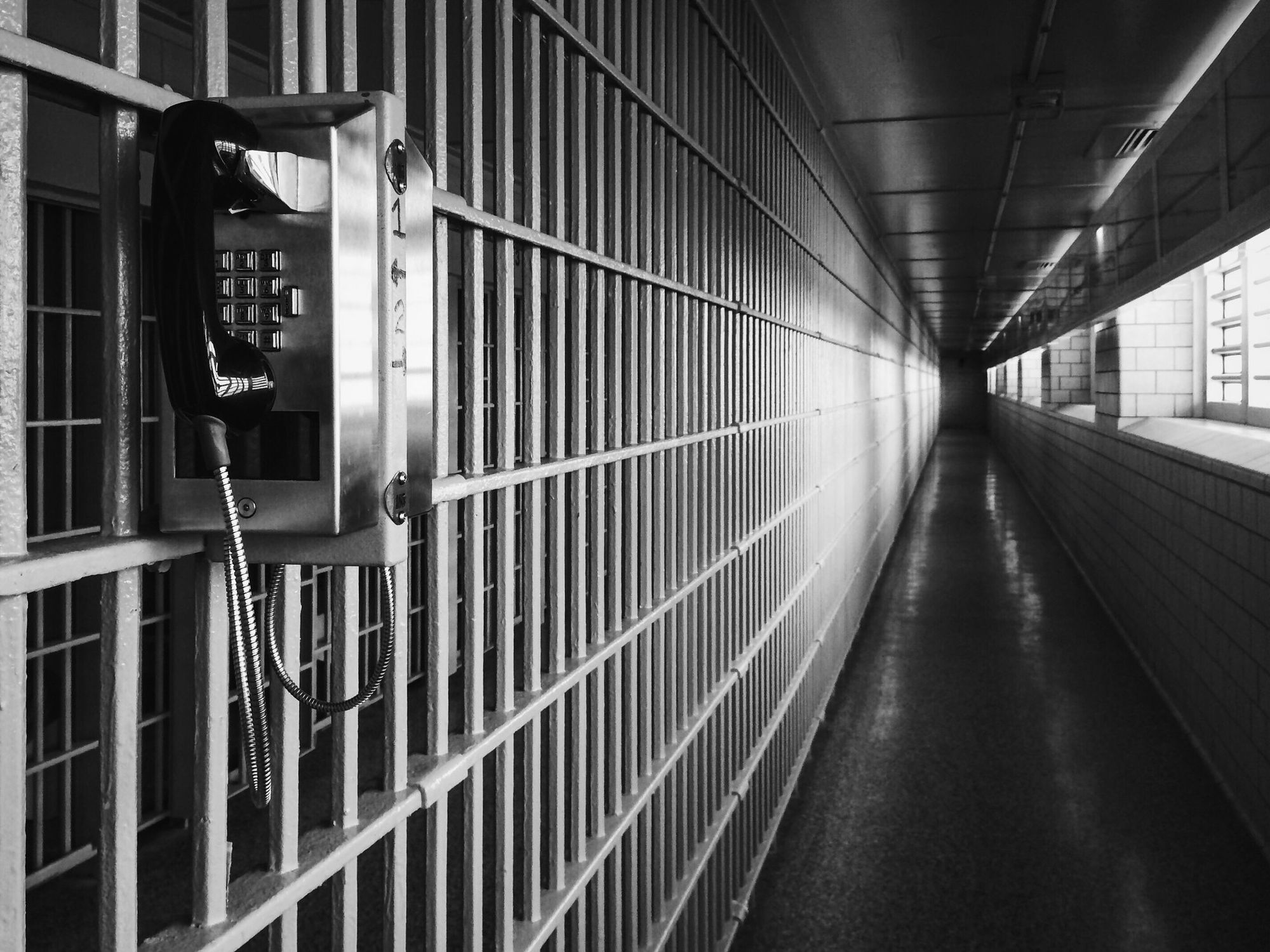This week, I sat down with Jordan House and Asaf Rashid to talk about their new book, Solidarity Beyond Bars: Unionizing Prison Labour, recently published by Fernwood.
Jordan is an assistant professor in the Department of Labour Studies at Brock University whose research focuses on prison labour and union renewal. Asaf is a criminal defence and prison lawyer. In their highly readable book, Jordan and Asaf analyze work and labour in the prison system and make a strong case for extending full labour rights to those incarcerated in Canada’s jails and prisons.
Adam King: First of all, congratulations on the book. It is a fantastic piece of research. Many readers of this newsletter likely aren’t aware how many prisoners in Canada work while institutionalized. What types of work do incarcerated people perform and under what conditions?
Asaf Rashid: Thank you! It’s true that prison labour isn’t something that a lot of people in Canada think much about. Many Canadians probably know more about prison labour in the United States, even though many of the same issues exist in their own backyards. There’s considerable variation throughout the federal, provincial and territorial systems, but the majority of sentenced prisoners in Canada work. CORCAN, the federal prison industry program, employs around 3,700 prisoners in a given year.
Jordan House: Prisoners in provincial jails and federal prisons work in institutional maintenance jobs — they do cooking, cleaning, clerical, and trades work for the institution that they’re in. Prisoners also work in prison industries like CORCAN producing goods and services that are generally sold to government departments. In Canada, only a small number of prison-produced goods and services are also sold to the public. Prison industries are incredibly varied. Prisoners make furniture and textiles, they build prefab houses, and do agricultural work. Prisoners also work in commercial laundry, printing, snow removal, auto repair and more.
As you can imagine, the conditions aren’t great. In some provinces, prisoners aren’t paid for work. In the federal system, prisoners at the high end of the pay scale make about $0.60 an hour.
AK: In the book, you challenge the notion that prisoners work as part of their punishment or rehabilitation. For what reasons do prisoners typically work while inside the Canadian carceral system and for whom do they work?
JH: Once upon a time, a person could be sentenced to “hard labour” as punishment for a crime. That’s no longer the case. Now, correctional law and policy understands the work of prisoners to be part of their rehabilitative programming. We could get into a long discussion about the problems with “rehabilitation” as it is understood by correctional services. In a nutshell, by classifying prisoners’ as participants in rehabilitative programming, prison administrators have been able to effectively exempt prisoners from basic employment and labour protections. The language of “rehabilitation” also obscures the fact that prisoners work to offset the costs of their incarceration. At the end of the day this is the ultimate rationale for prison labour. Correctional institutions simply couldn’t function without it.
AR: As we outline in the book, prison labour also serves an ideological function. It’s assumed that people in conflict with the law lack employment skills — which may be true in many cases. However, this assumption means that as long as prisoners are working, rehabilitation is assumed to be occurring as well. Conveniently, correctional law doesn’t define rehabilitation. Many critics, including the Office of the Correctional Investigator — the federal prison watchdog — have raised considerable concerns about the efficacy of federal employment programming. Existing employment programs don’t actually give people marketable skills and practically all the onus is on individuals when it comes to finding work upon release. The situation in the provinces and territories is no better.
AK: Despite all the vital work they do, prisoners lack the legal protections of ‘free’ workers. How is prison labour presently governed or regulated? Or, to put it the other way around, what legal protections are inmates denied as workers?
AR: Prisoners are generally not “employees,” as defined by employment legislation. As such, they aren’t entitled to basic employment standards like a minimum wage or overtime protection. Federal correctional law actually states that the purpose of pay is “encouraging offenders to participate in programs.” They’re also exempt from most occupational health and safety legislation. For example, “inmates” are explicitly excluded from the definition of “workers” in Ontario’s Occupational Health and Safety Act. Workplace injuries are not uncommon and there are also instances of prisoners being killed while working.
Since they are classified as participants in rehabilitative programming, prisoners — with one exception, which we’ll get to — have been prevented from being able to unionize. However, we think that this argument is actually quite flimsy — it’s a form of misclassification that’s not so different from gig economy companies who call their workers “independent contractors” to avoid labour and employment legislation.
AK: You make an interesting set of arguments for how and why prison labour should be “normalized,” as you put it. What would this “normalization” consist of and what do you think it could accomplish? What efforts have been made to improve prison work or to organize unions of prisoners?
AR: In short, there’s no good legal, moral or public safety reason to deny prisoners full employment, health and safety, or labour rights. On one level, this should be obvious: How does denying prisoners access to occupational health and safety protections help rehabilitate them? Working prisoners should have access to the same suite of basic rights as other workers. Winning this, of course, is no simple task. It will require a significant political and legal battle.
JH: Prisoners have long struggled to improve their conditions, including working conditions. These struggles take many forms. Sometimes prisoners riot. But they also petition, protest and litigate. Prisoners frequently engage in strike action to win demands. Just a couple weeks ago, prisoners in the federal Beaver Creek Institution in Ontario engaged in a coordinated work stoppage to protest delays in receiving medications. The prisoners won that main demand and returned to work.
There have also been a number of attempts by Canadian prisoners to unionize, including one successful attempt. In 1977, prisoners working in the abattoir at the Guelph Correctional Centre, a provincial jail in Ontario, received labour board certification and unionized with the Canadian Food and Allied Workers (CFAW). The case is unique since it involved a private meatpacking firm that operated the abattoir and a mixed incarcerated and non-incarcerated workforce. Still, the success of the union sets an important precedent. Through collective bargaining, the union won equal pay for prisoners, established a practice of obtaining temporary releases so that members could attend union meetings outside of the prison and other gains.
AK: I can imagine the logistics of a prisoners’ union might be difficult, particularly if it included only incarcerated members. For example, do you imagine unionized prisoners having a right to strike? What about collecting strike pay?
JH: The precedent of the CFAW gives us some insight. In that case, unionized prisoners had full labour rights, including the right to strike — although the union never exercised this right. We don’t see any reason why prisoners’ should be denied the right to strike. It would actually be pretty amusing to see the government go from denying the fact that prison labour is real work one day to declaring it essential the next.
AR: The question of strike pay is one of organization. If a prisoners’ union was independent, it would have a harder time building up a strike fund, but it could. The issue of financing is one reason why we think prisoners’ unions need to be supported by the broader labour movement.
AK: As you anticipate in the book, some people might contend that winning labour rights for prisoners could entrench prison work or lend legitimacy to imprisonment at a time when many on the left are fighting to reduce the use of, or even abolish, prisons. How would you respond? How do you see the struggle to extend labour rights to prisoners fitting together with fights for decarceration?
JH: We don’t think the demand for full employment and labour rights for prisoners is in tension with demands for decarceration. That said, we realize a prisoners’ union is not a panacea. There are critical issues of sentencing, parole, solitary confinement, access to healthcare and others that the prison justice movement will have to continue to fight for. However, we think that through creative collective bargaining strategies, political campaigning and public education efforts, a prisoners’ union could be a major asset to movements for prison justice and abolition.
Like in the rest of the world, the issue of wages will always be a battle. Some critics have argued that increased wages for prisoners would mean adding to already bloated correctional budgets. In the book, we suggest that proper wages for prisoners could have the effect of applying “upward” pressure on correctional budgets. If the full cost of incarceration was borne by the public, it might force new conversations about alternatives to incarceration.
AR: We also realize that much of this conversation is merely theoretical. At the end of the day, prisoners and their organizations will have to determine the strategies and demands that they see as the most useful.
AK: How much support is there in the broader Canadian labour movement for unionizing working inmates, or at least expanding labour rights and improving working conditions in prisons? Why is this something with which unions should be concerned?
JH: Currently, I wouldn’t say that there’s much support. But I think that’s largely due to the fact that people know so little about prison labour. There is a lot going on that is making people reevaluate who counts as a worker and who should be part of the labour movement. This is certainly the case with gig workers and migrant workers. But others, like sex workers and prisoners, should also be part of this conversation. The loopholes that deny prisoners basic rights as workers undermine the strength of workers’ rights as a whole. Moreover, we argue that a more inclusive and class-focused labour movement is necessary to reverse the ongoing decline of unions.
AK: I suppose an elephant in the room is the guards’ union. Some on the left contend that police and prison guards’ unions have no place at all in the labour movement. This issue is further complicated by the fact that there are other unionized workers in the prison system who are engaged in work that is nominally more rehabilitative. Counselors and educators, for example, might fall into the latter category, and some of them are members of fairly progressive unions in Canada. How do you see the struggle for prisoners’ labour rights relating to other unionized staff in the prison system? Is there room for alliances with non-inmate workers and their unions?
JH: Unfortunately, history has shown guards’ unions to be quite hostile to prisoner union efforts. In 1976, the threat of a wildcat guard strike effectively scuttled negotiations between the California Department of Corrections and the California Prisoners’ Union. That’s just one dramatic example. Some commentators have used the term “carceral Keynesianism” to describe how politicians and unions have supported the expansion and maintenance of prison and immigration detention systems in the name of “good” jobs. In Manitoba, the alliance between the provincial NDP and the Manitoba Government and General Employees’ Union around issues of prison expansion has led scholars and activists to speak of a “carceral left.” The labour movement will have to continue to have difficult conversations about its role in society and how we ought to understand the idea of the “public good.”
AR: There are some reasons for hope, though. Prisoners and guards have also found common cause in some instances. For example, both prisoners and guards have campaigned against prison privatization. Guards have also, at times, argued that low wages for prisoners strengthen black markets in prisons and contribute to increased violence. If we accept that there should be a just transition for workers in occupations that are harmful to the environment, it should be reasonable to argue that there needs to be a just transition for other workers in socially harmful occupations.
Ultimately, we need to dramatically shrink, if not eliminate, the prison system — just like we need to phase away from fossil fuels. Although it won’t be easy, the labour movement has an important role to play in this.







